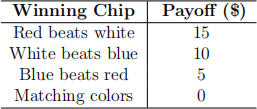SIT718 Real world Analytics
Hello, dear friend, you can consult us at any time if you have any questions, add WeChat: daixieit
SIT718 Real world Analytics
Assessment Task 3
Your final submission should consist of:
1. “name-report.pdf”: A pdf file (created in any word processor) with up to 8 pages, con-taining the solutions of the questions, labelled with your name;
2. “name-code.R”: Two codes combined in one with your R file, labelled with yourname.R, with lp models for Questions 2 and Questions 3.
Your assignment will not be assessed if we cannot reproduce your results with your R code.
1. A food factory is making a beverage for a customer from mixing two different existing products A and B. The compositions of A and B and prices ($/L) are given as follows,

The customer requires that there must be at least 5 Litres (L) Orange and at least 5 Litres of Mango concentrate per 100 Litres of the beverage respectively, but no more than 6 Litres of Lime concentrate per 100 Litres of beverage. The customer needs at least 100 Litres of the beverage per week.
a) Explain why a linear programming model would be suitable for this case study.
[5 marks]
b) Formulate a Linear Programming (LP) model for the factory that minimises the total cost of producing the beverage while satisfying all constraints.
[10 marks]
c) Use the graphical method to find the optimal solution. Show the feasible region and the optimal solution on the graph. Annotate all lines on your graph. What is the mini-mal cost for the product?
[10 marks]
Note: you can use graphical solvers available online but make sure that your graph is clear, all variables involved are clearly represented and annotated, and each line is clearly marked and related to the corresponding equation.
d) Is there a range for the cost ($) of A that can be changed without affecting the opti-mum solution obtained above?
[5 marks]
2. A factory makes three products called Spring, Autumn, and Winter, from three materials containing Cotton, Wool and Silk. The following table provides details on the sales price, production cost and purchase cost per ton of products and materials respectively.

The maximal demand (in tons) for each product, the minimum cotton and wool propor-tion in each product is as follows:

a) Formulate an LP model for the factory that maximises the profit, while satisfying the demand and the cotton and wool proportion constraints. There is no penalty for the shortage.
[10 Marks]
b) Solve the model using R/R Studio. Find the optimal profit and optimal values of the decision variables.
[10 Marks]
Hints:
You may refer to Week 8.7 Example - Blending Crude Oils into Gasolines. For ex-ample, let xij ≥ 0 be a decision variable that denotes the number of tons of products j for j ∈ {1 = Spring, 2 = Autumn, 3 = W inter} to be produced from Materials i ∈ {C=Cotton, W=Wool, S=Silk}.
3. Consider the following parlor game to be played between two players. Each player begins with three chips: one red, one white, and one blue. Each chip can be used only once. To begin, each player selects one of her chips and places it on the table, concealed. Both players then uncover the chips and determine the payoff to the winning player. In particular, if both players play the same kind of chip, it is a draw; otherwise, the following table indicates the winner and how much she receives from the other player. Next, each player selects one of her two remaining chips and repeats the procedure, resulting in another payoff according to the following table. Finally, each player plays her one remaining chip, resulting in the third and final payoff.

(a) Formulate the payoff matrix for the game and identify possible saddle points.
[5 Marks]
(b) Construct a linear programming model for each player in this game.
[5 Marks]
(c) Produce an appropriate code to solve the linear programming model for this game.
[5 Marks]
(d) Solve the game for both players using the linear programming model and interpret your solution in 3-5 sentences.
[5 Marks]
[Hint: Each player has the same strategy set. A strategy must specify the first chip chosen, the second and third chips chosen. Denote the white, red and blue chips by W, R and B respectively. For example, a strategy “WRB” indicates first choosing the white and then choosing the red, before choosing blue at the end.]
4. Three board members are going to vote for a president from them: Ava, Bob and Chloe. Each member is both a candidate and a voter. Here is the voting rule: each member votes for one candidate (voting for oneself is allowed); if two or more people vote for the same candidate then that person is chosen as the president; if there is exactly one vote for each candidate, then the person for whom Ava voted is selected as the president.
(a) Represent this voting procedure as a game frame, indicating inside each cell of each table which candidate is elected, i.e., using the president’s name as the payoff value.
[6 Marks]
(b) Convert the game frame into a 3-person non-zero-sum game with the following payoff values:
● When Ava is selected as the president: Ava - 4, Bob - 2, Chloe - 0.
● When Bob is selected as the president: Ava - 0, Bob - 4, Chloe - 2.
● When Chloe is selected as the president: Ava - 2, Bob - 0, Chloe - 4.
[6 Marks]
(c) Find the Nash equilibrium of this game. Explain your reason clearly.
[6 Marks]
(d) Find the Pareto optimality of this game. Explain your reason clearly.
[6 Marks]
(e) Does the extra power given to Ava (in case of one vote for each candidate) benefit Ava?
[6 Marks]
2021-09-24